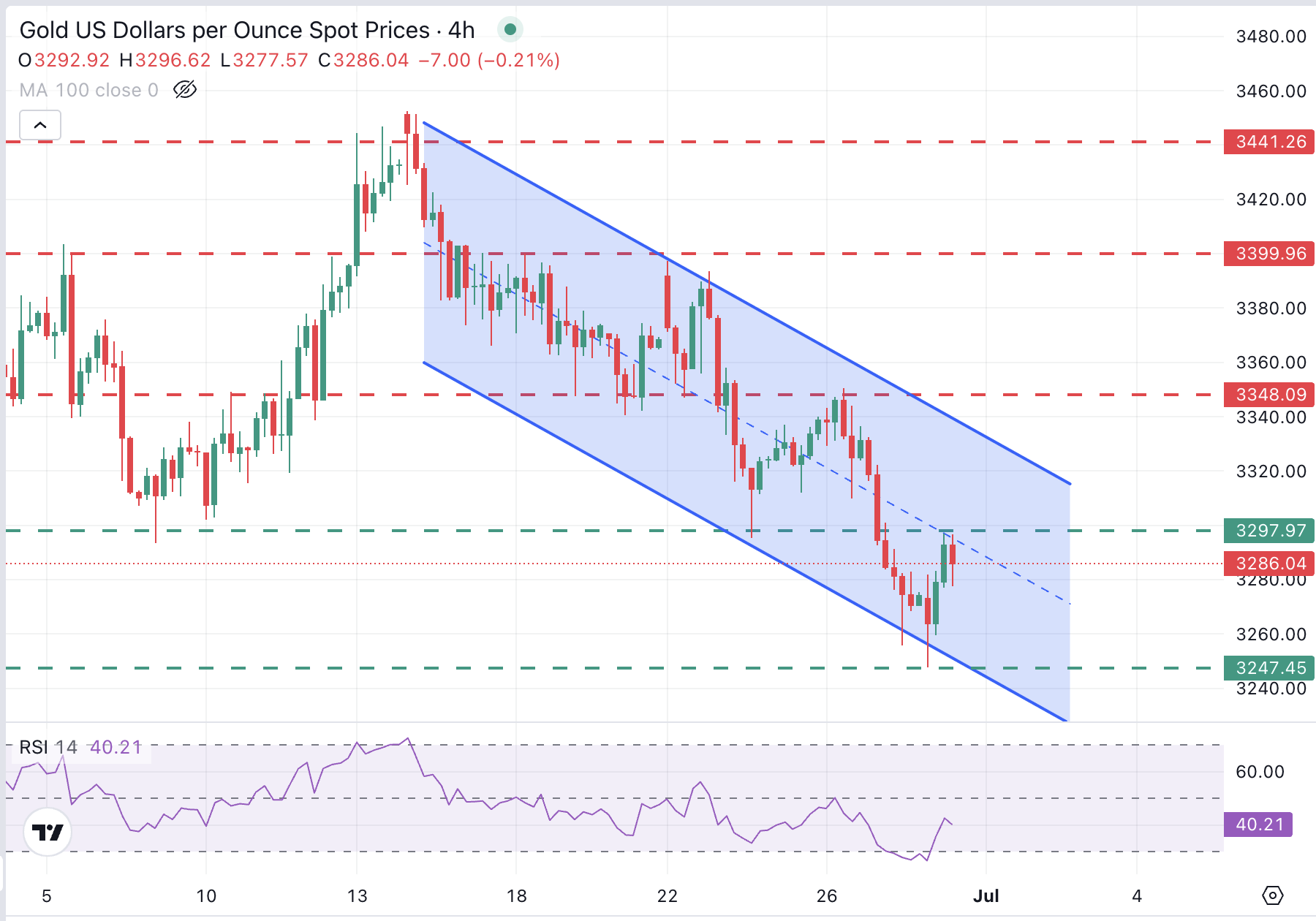Gold Price Forecast: XAU/USD failure to breach $3,300 brings $3,250 back into focus
- Gold ticks up on Monday following a nearly 3% sell-off last week.
- The Precious metal is drawing support from an ailing US Dollar.
- XAU/USD is on a bearish trend, with resistance at $3,300 and the $3,335-$3,350 area.
Gold (XAU/USD) is bouncing higher on Monday, but the broader trend remains bearish, following a nearly 3% decline last week. The Precious metal is drawing some support from the US Dollar's weakness, but a previous support at the $3,300 level is limiting upside attempts for now.
The peace agreement between Israel and Iran crushed demand for safe-haven assets like Gold last week, while this week, the progress on the tariff negotiations between the US and some of its main partners is supporting a mild risk appetite.
Technical analysis: XAU/USD is on a bullish correction

Monday’s recovery seems like a bullish correction, which is likely to have a limited scope unless the fundamental backdrop changes radically. The Relative Strength Index (RSI, 14) in 4-hour charts remains below 50, highlighting the bearish momentum.
The mentioned resistance at $3.300 area (June 24 low) is capping upside attempts for now, ahead if the descending channel top, now around $3,335. The precious metal should return above $3,350 (June 26 low) to confirm a trend shift.
A rejection from current levels would bring the June 29 and May 29 lows, as well as the bottom of the mentioned channel, which are converging at $3,250, back to the table. Below here, the next target is the May 20 low, at 3,205.
Gold FAQs
Gold has played a key role in human’s history as it has been widely used as a store of value and medium of exchange. Currently, apart from its shine and usage for jewelry, the precious metal is widely seen as a safe-haven asset, meaning that it is considered a good investment during turbulent times. Gold is also widely seen as a hedge against inflation and against depreciating currencies as it doesn’t rely on any specific issuer or government.
Central banks are the biggest Gold holders. In their aim to support their currencies in turbulent times, central banks tend to diversify their reserves and buy Gold to improve the perceived strength of the economy and the currency. High Gold reserves can be a source of trust for a country’s solvency. Central banks added 1,136 tonnes of Gold worth around $70 billion to their reserves in 2022, according to data from the World Gold Council. This is the highest yearly purchase since records began. Central banks from emerging economies such as China, India and Turkey are quickly increasing their Gold reserves.
Gold has an inverse correlation with the US Dollar and US Treasuries, which are both major reserve and safe-haven assets. When the Dollar depreciates, Gold tends to rise, enabling investors and central banks to diversify their assets in turbulent times. Gold is also inversely correlated with risk assets. A rally in the stock market tends to weaken Gold price, while sell-offs in riskier markets tend to favor the precious metal.
The price can move due to a wide range of factors. Geopolitical instability or fears of a deep recession can quickly make Gold price escalate due to its safe-haven status. As a yield-less asset, Gold tends to rise with lower interest rates, while higher cost of money usually weighs down on the yellow metal. Still, most moves depend on how the US Dollar (USD) behaves as the asset is priced in dollars (XAU/USD). A strong Dollar tends to keep the price of Gold controlled, whereas a weaker Dollar is likely to push Gold prices up.

